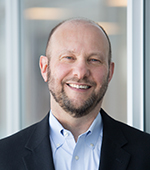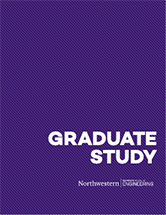Organizing for Innovation in Northwestern MEM
Mark Karasek has spent nearly 20 years focusing on innovation at The Chamberlain Group. Now he's bringing that expertise to Northwestern's Master of Engineering Management (MEM) program.
Mark Karasek is Executive Vice President of Engineering and Chief Technology Officer of The Chamberlain Group, a midsize corporation with 4,000 worldwide employees worldwide and a global leader in the Access and Security markets. The company delivers innovative connected products and services in the residential and commercial garage door opener and vehicle access categories and is a recognized leader in the emerging IoT space.
 Karasek has been the lead executive for product development and innovation at The Chamberlain Group for nearly two decades. In that role, he is tasked to ensure the company has the right processes, technologies, and people to bring innovations to market.
Karasek has been the lead executive for product development and innovation at The Chamberlain Group for nearly two decades. In that role, he is tasked to ensure the company has the right processes, technologies, and people to bring innovations to market.
It is that unique background and experience that makes Karasek uniquely qualified to teach Organizing for Innovation (MEM420) within Northwestern's Master of Engineering Management program. Karasek is currently teaching the class for the first time, and he took a few minutes to talk about innovation, his background, and what he hopes his students take away from the course.
How do you describe MEM420 to someone who is not involved in the MEM program?
MEM420 is a class about how companies innovate in the face of the rapid change that is impacting many markets today.
What do you see as the goal of the course?
The goal of MEM420 is to prepare students to be active participants and, hopefully, someday, leaders of the innovation practices at large, successful companies.
When you hear the word "innovation," what does it mean to you?
Defining innovation and differentiating it from invention is the first thing we do in MEM420. Innovation is fundamentally about creating value for an end user. I believe innovation is about solving a meaningful problem for an end user in a way that is so valuable to them that they are willing to pay you for the solution that creates fundamental, measurable improvement in their lives.
It's not all that far into the quarter, but so far, what's been your reaction to the class and the MEM students?
I am having a lot of fun designing and delivering the course for the first time. I am impressed with the quality of the students in the program and their ability to grasp and apply the key frameworks of innovation. The class includes a lot of project work in teams so that the students get real hands-on experience with the toolsets for managing innovation. The work product of these teams has been really high quality so far and I can see the students using the toolsets in ways that they will be able to apply to be successful as innovation leaders in real companies.
What are one or two unique components that you bring to the course?
I have led the innovation practice at my company for almost 20 years, and I have been involved with a number of benchmarking and “best practices” groups over that timeframe focused on innovation and intellectual property management, so I can share with the students the frameworks that real companies are using to innovate successfully in the marketplace. I am fortunate to have been a part of the evolution of my employer, from being a product-based company to being a connected ecosystem leader. Many companies are or will soon be experiencing this same journey, and the experiences and examples I bring to MEM420 can help prepare MEM students to succeed in leading innovation at these companies.
In what ways do you think The Chamberlain Group is organized for innovation?
Chamberlain is evolving from being a consumer and commercial durable products manufacturer to being a connected access and services ecosystem leader. We manage a balanced innovation portfolio across the three horizons of innovation and have driven meaningful innovation into the marketplace. We have successfully adopted the toolsets of phase gate, agile and lean start-up to bring innovation to market. The company focuses on a cross-functional team approach to delivering value in the marketplace, with the end user at the center of everything.
How has The Chamberlain Group adopted IoT and other emerging technologies?
Chamberlain is considered a leader in the IoT space due to our MyQ connectivity platform that allows homeowners to access and control their garage doors from anywhere in the world. We didn’t introduce this platform because we wanted to be in the IoT space but rather to address an identified end user pain point.
We heard repeatedly in our voice-of-the-customer ethnography work that it had become so habitual for homeowners to press their transmitter button on their car visor to close the garage door when they left the house that they would forget if they closed the door. Person after person described to us that several times a week or multiple times a month they have to circle around the block or call a neighbor or spouse to see if the garage door was closed. They needed a way to check the status of the door and safely close it remotely if it was open.
We were simply trying to solve that identified end-user need, and we determined that introducing a connected platform was the best way to solve that customer problem. The development and introduction of that platform has put us at the forefront of both the B2C and B2B IoT spaces and has led to new growth opportunities like the recently introduced in-garage delivery with Amazon Key.
What do you think differentiates The Chamberlain Group?
Chamberlain has a deep knowledge of and focus on the customer and end-user needs. We understand how important safety, security, and reliability are to all our channel partners and our end users. This allows us to bring differentiated products and services to the marketplace that solve real problems in effective ways.

